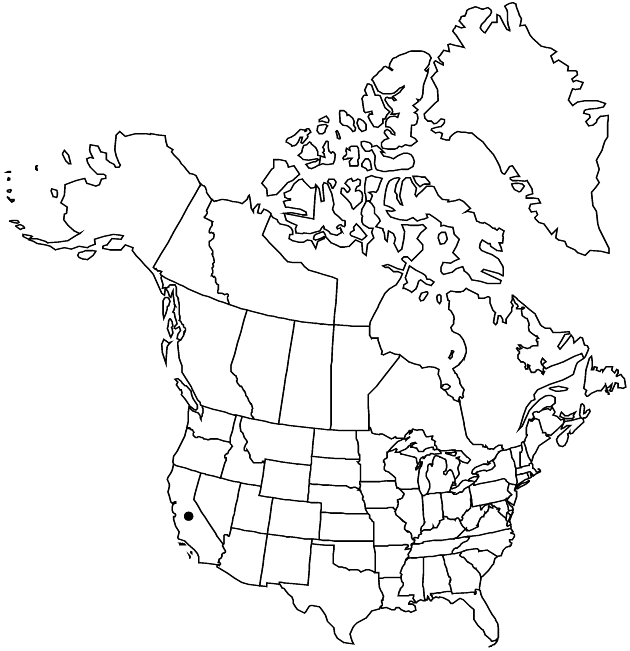Malacothrix saxatilis
Fl. N. Amer. 2: 486. 1843.
Perennials (sometimes flowering first-year), (20–) 90–200 cm. Stems 1 (from rhizomes) or 2–3+ (from caudices), usually erect (sometimes relatively thick), branched mostly distally (usually relatively leafy proximally, sometimes sparsely leafy distally), glabrous or sparsely arachnose to tomentose. Cauline leaves: proximal (somewhat thick, usually withering early) elliptic, oblanceolate, lanceolate, or linear (sometimes 1–2-pinnately lobed, lobes lanceolate or linear to filiform, sometimes antrorse, bases usually tapering), ultimate margins entire or dentate to denticulate, faces glabrous or ± arachnose to tomentose; distal reduced. Calyculi of 12–18 (–30), lanceolate to subulate bractlets, hyaline margins 0.05–0.2 mm. Involucres ± campanulate, 9–12 (–16+) × 6–8 (–12+) mm. Phyllaries 18–30+ in 2–3 series, lanceolate or linear to subulate, hyaline margins 0.05–0.2 mm wide, faces glabrous or ± arachnose and glabrescent. Receptacles not bristly. Florets 41–100; corollas white (usually each with abaxial purple stripe), 13–20 mm; outer ligules exserted 8–14 mm. Cypselae ± prismatic, 1.4–2.5 mm, ribs extending to apices (± muriculate at 30×), 5 more prominent than others; pappi persistent, of fimbriate crowns or 20–25, blunt teeth (0.01–0.1 mm). Pollen 70–100% 3-porate. 2n = 18.
Discussion
Varieties 5 (5 in the flora).
The Malacothrix saxatilis complex is taxonomically difficult. The varieties intergrade morphologically in leaf shape, indument, blooming time, and growth cycle, depending on relative habitat conditions such as elevation, soil, and temperature regime. Hybridization may occur between varieties where they are sympatric. In addition, arrays of heads in early bloom may be described as congested (peduncles relatively short) and as open (peduncles relatively long) on the same plant at the end of the season.
Varieties commutata, arachnoidea, and saxatilis are similar in leaf morphology; var. arachnoidea is distinguished from var. commutata mainly by its tomentose herbage; var. saxatilis differs from the other two varieties in minor details of leaf morphology and in its area of distribution; var. implicata is the most distinctive variety; and var. tenuifolia differs from the others primarily in cauline leaf morphology, which is quite variable. Variety altissima has been described as similar to vars. arachnoidea and commutata and different from vars. saxatilis, implicata, and tenuifolia in growth habit. It is similar in leaf morphology to var. tenuifolia but differs from vars. arachnoidea, commutata, implicata, and saxatilis. Here, var. altissima is subsumed in var. tenuifolia.
Selected References
None.
Lower Taxa
Key
| 1 | Cauline leaves usually 1- or 2-pinnately lobed | > 2 |
| 1 | Cauline leaves usually not lobed | > 3 |
| 2 | Stems relatively densely leafy distally; cauline leaves mostly (1–)2-pinnately lobed (lobes linear to filiform); California Channel Islands | Malacothrix saxatilis var. implicata |
| 2 | Stems relatively sparsely leafy distally; cauline leaves 1-pinnately lobed or (distalmost) not lobed (linear to filiform, entire) | Malacothrix saxatilis var. tenuifolia |
| 3 | Distal cauline leaves usually ovate to linear, apices usually obtuse; coastal bluffs, south slopes of Santa Ynez Mountains, Santa Bar- bara County | Malacothrix saxatilis var. saxatilis |
| 3 | Distal cauline leaves broadly lance-linear or lanceolate to elliptic, apices usually acute; north slopes of Transverse and Coast ranges to Monterey County | > 4 |
| 4 | Herbage tomentose | Malacothrix saxatilis var. arachnoidea |
| 4 | Herbage glabrous or ± arachnose | Malacothrix saxatilis var. commutata |
"fine" is not a number."]" is not declared as a valid unit of measurement for this property.
